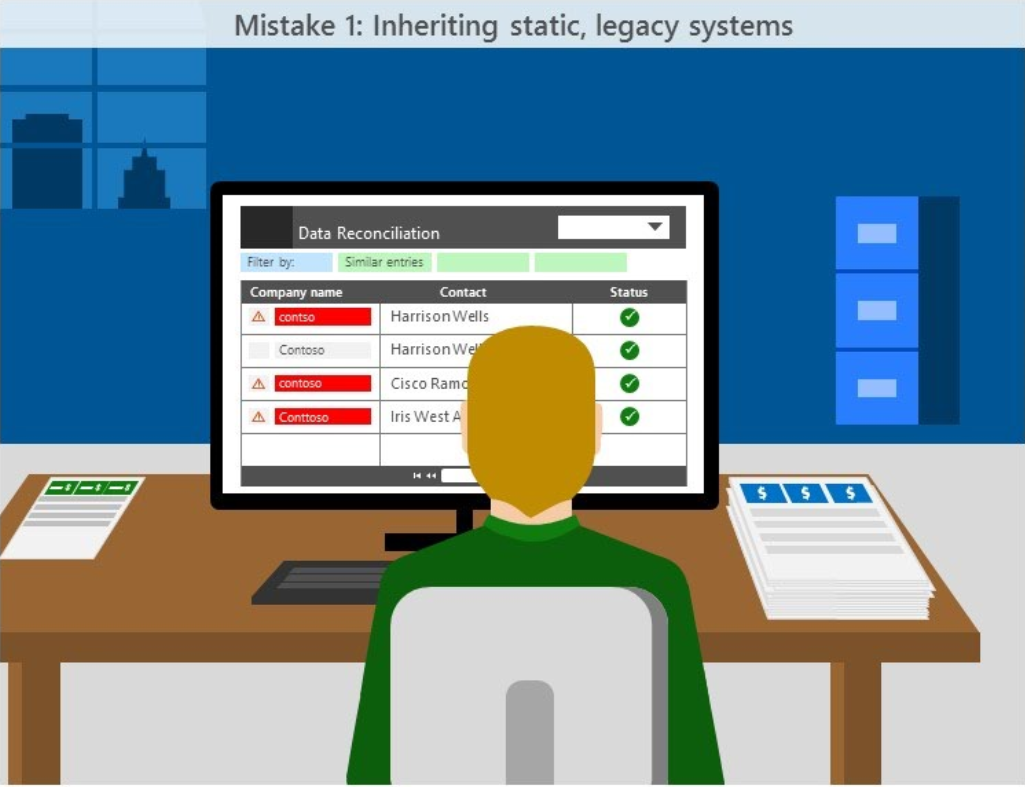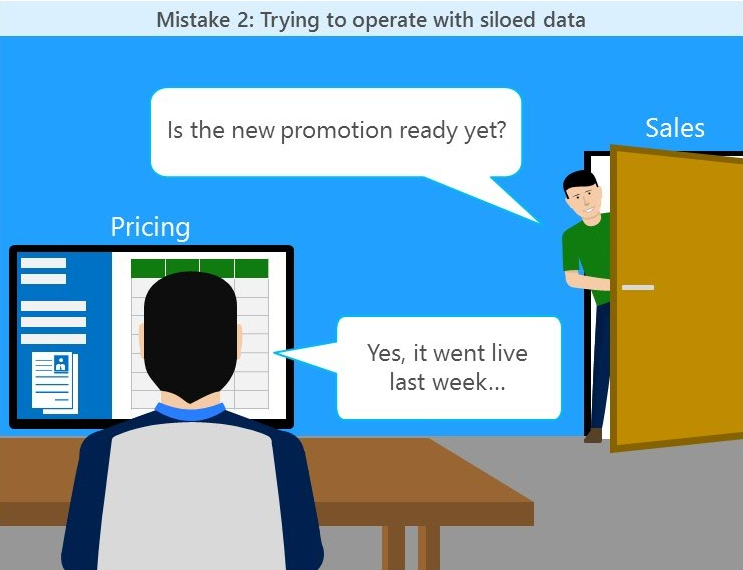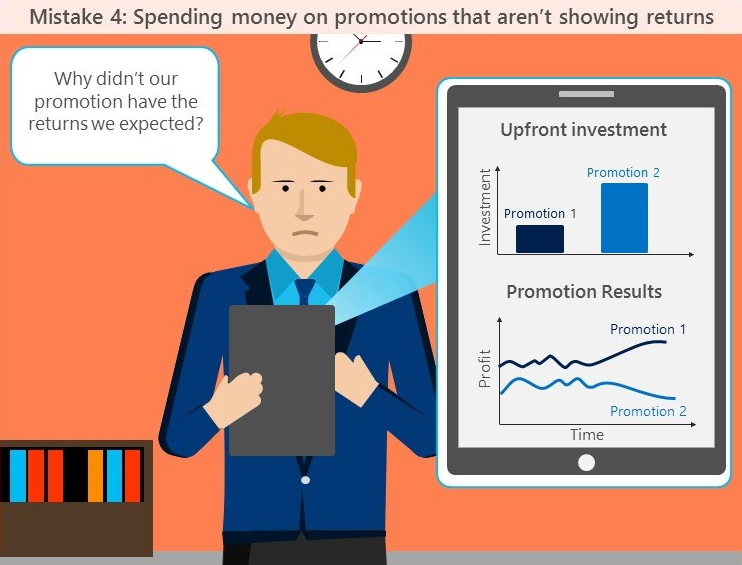
Four avoidable pricing & promotions execution mistakes
We’ve all heard of the Butterfly Effect and how the smallest change can sometimes have huge consequences. For consumer goods (CG) brands and retailers, we see this all the time when it comes to pricing—a mere one percent adjustment in effective net price can achieve a 10 percent rise in operating profit.[i] If all it takes is a one percent adjustment in price effectiveness to boost revenue, why do 59 percent of trade promotions run by CG companies and retailers result in a net loss, and why are promotions losing more every year?[ii] It’s because brands and retailers struggle with the following simple yet avoidable mistakes around pricing and promotions:
Mistake 1: Inheriting static, legacy systems
Imagine a business that operates using a 25-year-old ERP system. Imagine that the system was completely dependent on Excel spreadsheets. Now imagine that the last person in the country who knew how to update that system was closing their business.[iii]
Unfortunately, this isn’t just a hypothetical. It’s a real situation that a CG company found themselves in and one that could happen to any of the 40 percent of retailers and CGs who use an Excel-based or homegrown solution for their business.[iv]
Not only are they difficult to update, legacy systems prevent retail and consumer goods from operating efficiently and effectively. They slow down analysis and open the door to manual errors and version control issues that devastate day-to-day operations. Unless someone in the organization is actively working to create integration, data inputs into the CRM system must be manual. The time-consuming nature of this task means that companies won’t always have access to the up-to-date data they need to create optimal prices for specific customer segments, company sizes, or geographies. Manual data inputs don’t give sellers the flexibility to include and exclude specific products or customers in their promotions or adjust volume and discount breaks in real time to keep up with demand shifts. Legacy systems are not only cumbersome—they create silos of data that make it nearly impossible for companies to standardize pricing and promotion practices across their organization.
Mistake 2: Trying to operate with siloed data
Most retail and CG organizations have ERP and CRM systems, but when these aren’t integrated, the result is an organization burdened by siloed data and processes. The disconnect leads to management of different aspects of trade agreements in multiple places. Handling prices and promotions across multiple systems leads to complexity and a skyrocketing possibility of entry errors. Valuable time is spent trying to integrate promotional agreements with accounts and retrieving accurate pricing for products and transactions. Instead of spending their days on sales, teams find themselves bogged down by manual administrative tasks that don’t produce accurate or measurable revenue results. Furthermore, manual tasks and data entry cause inconsistencies that create even more time-consuming audit compliance and maintenance issues downstream.[v] All this time spent on other tasks means teams are unable to make adjustments quickly enough, impacting their ability to capture all profits and keep up with customer demand.
Mistake 3: Managing channel prices in different places
Forty-seven percent of customers say a consistent experience across channels is important to them when engaging with a retailer or CG brand.[vi] And while most retailers and CG organizations engage with customers in multiple channels, they struggle to create that consistent experience. One of the most inhibiting factors is the fact that ecommerce channels often use different price models and sources than the traditional business. Pricing teams find themselves spending time maintaining two pricing systems and reconciling errors instead of working to meet customer demand. When companies cannot keep up with the speed at which product prices need to change, it results in unmet demand and delayed end-of-month reconciliations. Without a single source of pricing truth across their enterprise, companies create pricing and promotional strategies that aren’t derived from the right data. Companies must constantly bring together information from CRM and ERP systems to make sure customers are offered the right promotions and pricing if they want to meet customer demand across channels and see a return on their promotions.
Mistake 4: Spending money on promotions that aren’t showing returns
Facing the previous three mistakes, it’s no wonder 59 percent of retailers and CG brands experience a net loss on their promotions. Sales teams operating with the wrong price going into a promotion will face massive losses, and without access to real-time data, promotion performance review doesn’t occur frequently enough to provide the insights that would enable sellers to shift promotions to meet actual demand. Sellers unknowingly end up implementing the same ineffective promotions over and over. It’s especially difficult to gauge promotion value when sellers don’t have visibility into how different variables such as discounts and rebates impact success. The best way for them to manage promotions and pricing is through a single, integrated solution that ensures their company meets customer product and pricing demand anytime, anywhere.
Deploy a pricing and promotion execution solution that addresses all these mistakes and drives revenue
There is a simple solution to prevent these common mistakes—Pricing and Promotions Execution (PPE) from Flintfox. Built on the Microsoft Cloud, PPE offers CG organizations and retailers a new way to manage their promotions and prices, calculating up to 17,000 prices per second. With a single source of truth in the cloud, a leading consumer goods manufacturer saw a reduction in pricing errors worth US $100k per month.[vii]
Try the Pricing and Promotion Execution solution on Microsoft AppSource today, and for more information follow @FlintfoxIntl. Flintfox’s solution is part of Microsoft’s cloud solution portfolio for the retail and consumer goods industries, which also includes AFS Retail Execution, AFS POP Retail Execution, Plexure Retail Personalization, Neal Analytics Inventory Optimization and Dynamics 365.
[i] https://www.flintfox.com/trade-revenue-management/advanced-pricing/
[ii] http://www.nielsen.com/uk/en/press-room/2015/most-grocery-trade-promotions-lose-money-for-suppliers.html
[iii] https://www.flintfox.com/customer-stories/tasti-products/
[iv] Forrester, 2015 https://www.forrester.com/report/Market+Overview+Trade+Promotion+Management/-/E-RES115669
[vi] http://www.supplychain247.com/article/2015_warehouse_dc_operations_survey_results
[vii] https://www.flintfox.com/trade-revenue-management/advanced-pricing/








